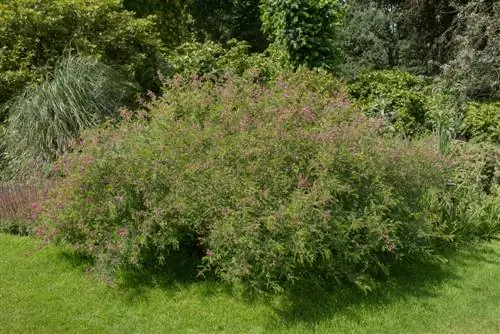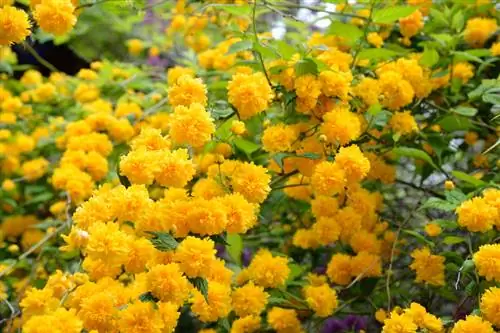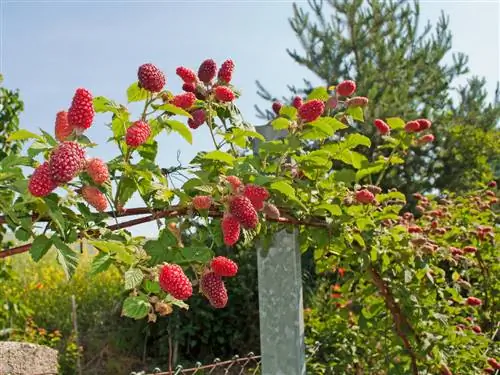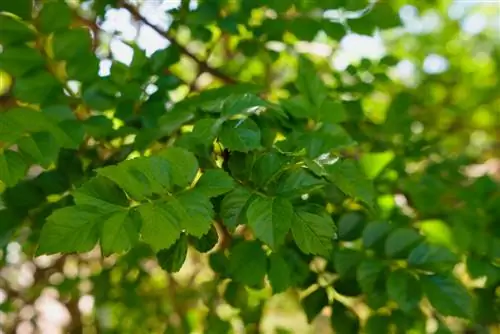- Author admin [email protected].
- Public 2023-12-16 16:46.
- Last modified 2025-01-23 11:22.
The indigo bush is an attractive butterfly flower that is characterized by a long flowering period. The tree shows its blossoms between June and October, whereby the correct cut and the optimal cutting date are of great importance for the flower development.
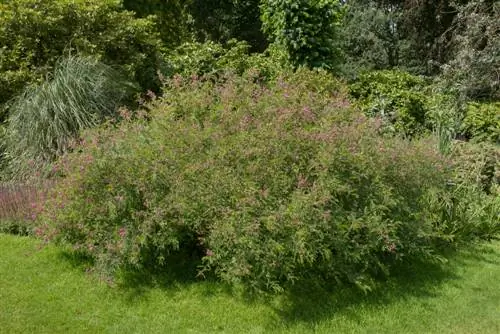
How do you cut an indigo bush?
Indigo bushes should be cut in spring before the buds emerge. Care cuts, thinnings, espalier bush cuts or radical cuts can be carried out, depending on the needs and condition of the plant. Regular cutting promotes flower development and he althy growth.
Optimal timing
The indigo bush develops its flowers on this year's wood. This means that the plant sprouts and flowers after cutting in the early year. Therefore, only spring pruning is an option for this species. This should take place in the leafless state before the fresh buds sprout so that the plant then puts all its energy into the remaining sleeping eyes. No pruning measures are recommended during the winter as the cuts will be damaged by frost.
Care cuts
If you want to keep your indigo bush small, we recommend removing a generous amount of branches. Shorten all branches so that half to a third remain standing. This corresponds to a remaining height of 30 to 50 centimeters. In this way, enough buds are retained to ensure fresh growth in the next few weeks.
Tip
You can use the cut plant material for propagation from cuttings.
Blending
With this care measure, concentrate on branches that disrupt the overall picture. This includes specimens that grow inwards, are too close together or cross each other. Remove such branches directly at the base without damaging the branch. Sick, dead and damaged shoots are also removed.
Cutting espalier bushes
Indigo bushes also grow on trellises as an alternative to overgrown climbing plants such as wisteria. To keep these specimens in shape, shorten the new shoots that are reaching to the side every year. Similar to solitary trees, it is sufficient here if a few sleeping eyes remain. You can shorten the main shoot or direct it further upwards as needed.
Radical cuts
If many branches have frozen back during the winter, radical pruning makes sense. Shorten the shoots to ten centimeters above the ground and make sure that some buds remain on the remaining parts of the plant. In the coming growing season, the indigo bush will sprout again vigorously, so a flower can be expected in the same year.
Rejuvenation
Shrubs that have been pruned annually also tolerate radical pruning well. If the trees have grown for years without regular cutting, a lot of old wood has formed. This sprouts harder, so you should be careful when removing branches. For specimens that have grown too large and are out of shape, careful thinning is recommended. The cutting intensity depends on the growth over the last one to two years.
You can use this as a guide:
- Cut longest rods at the base
- shorten all remaining branches slightly
- few buds should remain
- do not cut back into the old wood

